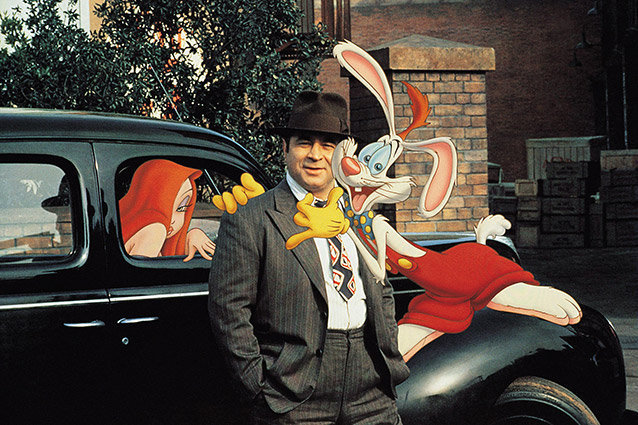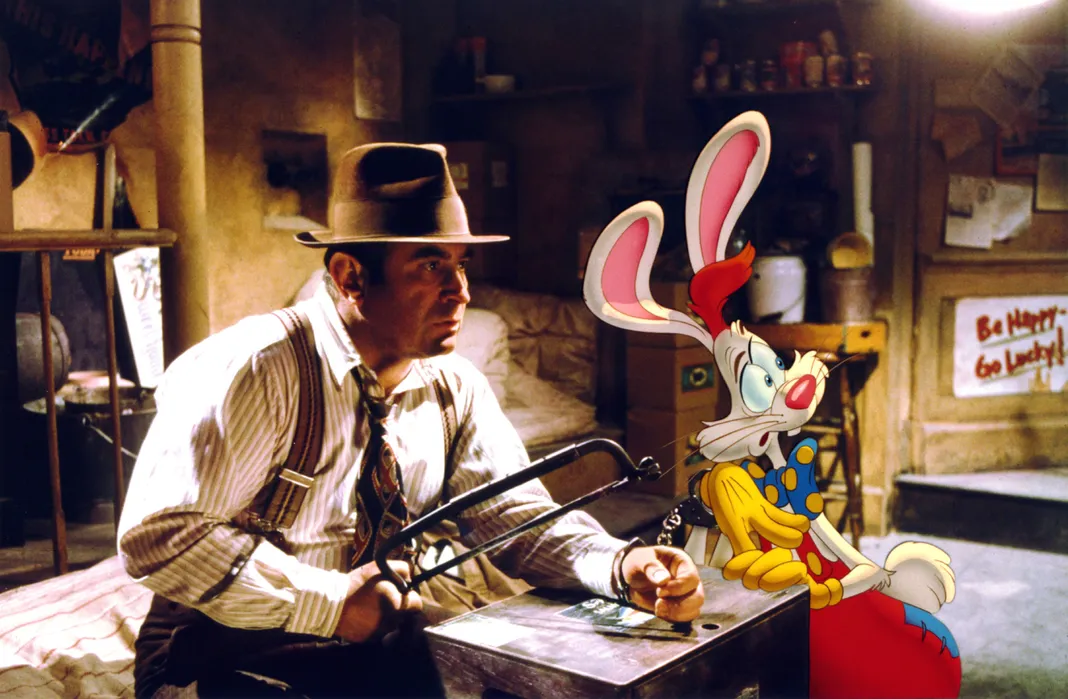
In a movie filled with rocket-fueled cartoon high jinks — babbling rabbits dodging armies of merciless kitchenware, motormouth cabs zooming through (and over) the streets of Los Angeles, stray bullets arguing over the whereabouts of their desired target, piano duels that devolve into feather-flying donnybrooks — it says quite a bit that the scenes driven by a non-animated sourpuss in his mid 40s don’t drag in the slightest. In fact, some of my favorite material from Who Framed Roger Rabbit, a movie that enjoys a permanent home in my top five, is that of Bob Hoskins’ curmudgeonly detective Eddie Valiant.
Today, the role in a film like this (as if a film like this could really be made today) would be given to someone like Ryan Reynolds — handsome, goofy, capable of matching his hand-drawn sidekick in family friendly slapstick. But the Valiant we got in ’88 had to play down the loony and up the humane. Not only is it called for on a narrative level (he hates toons), but also in the management of the film’s unbelievable gravity. Thanks to wily Roger and his propensity for withstanding any number of refrigerator-based head injuries, Robert Zemeckis’ first foray into the world of animation is not stingy with the hysterics. But on the other side of the Toontown tunnel, we find a glimmer of the real world: Hoskins, playing a prickly, dejected has-been committed to slathering all memories of a happier time in a thick coating of whiskey.

Without Hoskins’ earnest, earthy approach to the character — playing him with the cranky determination you’d find in the leading men of John Huston or Roman Polanski — Who Framed Roger Rabbit would be little more than an impressive technical feat. In Valiant, we’re grounded to the tenets of adulthood: pragmatism, prejudice, and gloom, played against the impossibly impenetrable childhood of Roger. Though most of our laughs come from the bowtied showman and his colorful ilk, we need to experience their story through Eddie, to channel these nutballs’ hidden humanity through the lens of Hoskins’ reluctant hero.
Luckily, Hoskins gives us that chance, creating an Eddie Valiant that ushers us seamlessly from a recognizable world into the bizarre but (thanks to Bob) shockingly inviting neo-noir of the ’47 L.A./Toontown border. Not worried about getting his solo in the showstopper and concerned only with telling a terrific story, Hoskins still manages to give Who Framed Roger Rabbit some of its most winning scenes, and incredible feat accomplished by not vying toward the sky-high mania of Roger but in helping to anchor the character and his elastic brethren down to our own terrestrial homestead. Hoskins shoulders the responsibility of making not just Eddie but the world around him feel real, palpable, and worthwhile. And whether he’s drowning his own malaise, casing back alleys, and struggling to restrain a compulsively wacky cartoon rabbit, he — just like his grumbling private eye — gets the job done.


